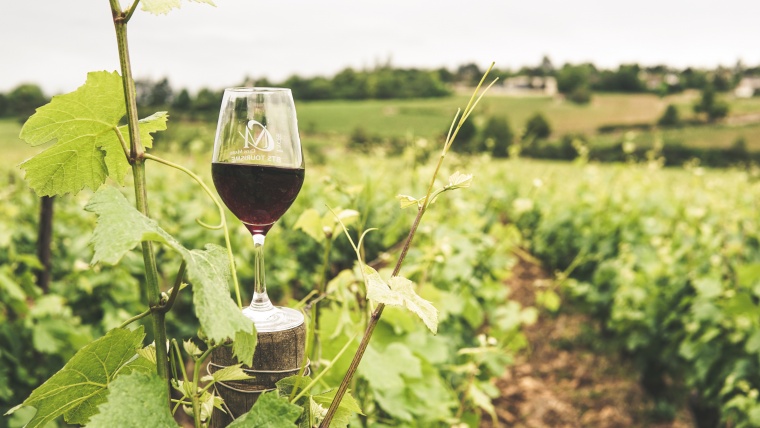How the Pandemic Is Affecting the 2020 Wine Vintage
How the Pandemic Is Affecting the 2020 Wine Vintage
This is how the harvest will look this fall.
:max_bytes(150000):strip_icc():format(webp)/pandemic-wine_main_720x720-e6a830794cf842a59fc8506ee41a8e0b.jpg)
Virtual tastings and Zoom happy hours aside, 2020 has been a precarious time for the wine industry. Unable to welcome visitors for vineyard tours or tasting-room flights, producers have also faced the loss of on-premise sales when restaurants, bars, liquor stores and wine shops closed. Now, winemakers are looking ahead to the ways in which this fall’s harvest will be different.
Increased Safety Measures
In the vineyard, most vines are spaced at least five apart, so social distancing is relatively easy to achieve, says Richard Bruno, the winemaker and president of Longhorn Ridge Vineyard, located near Atlas Peak in California’s Napa Valley. This means that regular practices including pruning, canopy management, green harvesting (the practice of removing extra grape bunches to allow for more even ripening), vine training and picking can be undertaken as usual, albeit with masks to keep others safe. But not so in other sections of the winery.
Once grapes come in from the vineyard, the sorting process is not unlike an assembly line, with workers standing elbow to elbow to pull out rotten bunches, leaves, twigs and anything else that doesn’t belong. This year, that process will require some extra precautions. During the harvest period, says Bruno, he anticipates grapes will be “dumped in multiple stations with a staggered approach.” He has installed plexiglass partitions, including on the packing and bottling lines, where employees also work in close proximity.
During fall harvest at Napa Valley’s Sterling Vineyards, employees will wear personal protective equipment (PPE), a new element for vineyards. “The safety and security of the Sterling team is my number-one priority in any year,” says Harry Hansen, the director of winemaking, who has ushered the winery through 38 vintages. “We’ll be focused on going home after a hard day’s work a little tired but healthy and safe.”
Even More Sanitizing
Ask any winemaker to name the most important job in the cellar, and they will no doubt cite cleaning. If viticulture is essentially farming at heart, winemaking is a series of practices—pressing, crushing, fermenting—interspersed with meticulous, thorough and rigorous cleaning and sanitizing. Crushing equipment, fermentation tanks, hoses, barrels and everything else must be completely sterile so the final product doesn’t become contaminated. This year, cleanliness takes on even more of an increased importance to keep the equipment, fruit, juice and bottles virus-free. “The COVID-19 situation is still a moving target,” says Bruce McGuire, who has served as winemaker for the past 40 years at Santa Barbara Winery and Lafond Winery and Vineyard in the Santa Rita Hills in the western part of California’s Santa Ynez Valley. “Wineries already sanitize constantly, and we have stepped that up.”
Falling Wine Prices Amid a Glut of Grapes
Early on in the pandemic, winery tasting rooms around the world were ordered to shutter, resulting in major loss of revenue from guests who would have normally purchased tastings and bottles during their visit. McGuire is reducing the amount of grapes his wineries purchase this year to allow inventory to balance out what wasn’t sold in the three tasting rooms that have remained empty during government-mandated closures. “There will be fruit available on the open market, [and] prices will probably soften; the consumer will benefit, and grape growers will not,” he says. “In this evolving situation, we must be flexible and adaptable—things wineries already do every harvest.”
Prices will drop, Bruno predicts, especially in California, where even before COVID-19 there was significant oversupply. This year, he believes even more grapes will remain on the vine. “If this happens, it will help balance the supply demand curve, but there may be growers and wineries hurting as a result,” he says. “Potential buyers will not buy them unless there’s a place for them to make the wine. If a winery’s tanks are full, they can’t make more wine.” The several months during which wineries have had to hit the pause button translate to excess inventory they will have to offload at a loss.
Continued Emphasis on Online Sales
Pasqua Vigneti e Cantine, a third-generation family-owned winery that dates back to 1925, is located in northeast Italy’s Veneto region, the area of the country hardest hit by the novel coronavirus. The company produces 1.3 million cases annually with a focus on amarone and several proprietary blends, and Alessandro Pasqua, the co-owner and vice president for North America, points out that the pandemic didn’t really affect production. “COVID-19 measures did not substantially affect production of Italian wines, as wine production was considered an essential business,” he says. However, the ways in which bottles got into customers’ hands changed. As the company returns to business as usual, he foresees online wine sales continuing to dominate sales.
Similarly in the U.S., wine producers and retailers have been deemed essential businesses, much to the delight of oenophiles who belong to wine clubs, subscribe to monthly shipments with outlets including FirstLeaf, VineBox or Winc or would rather have cases arrive at their doorstep from purveyors like Wine.com rather than mask up and peruse the shelves of their local wine shop.
Hope for the Future
An old adage says people drink when they’re happy and when they’re sad, when the market is up and when it’s down, and when things are looking up and when they’re looking grim. Bruno believes the wine industry is resilient enough to survive this pandemic in the same way it has made it through natural disasters like earthquakes and wildfires. “At times, making wine during tragedy seems to make the task of doing it trivial, but I’m a winemaker—it’s what I do,” he says. “The idea that a wine enthusiast or collector may be drinking vintages of my efforts long after I’m gone helps to give me purpose. I think about them often and have no plans of letting them down.”



